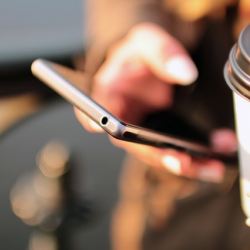Last week's Consumer Electronics Show (CES) featured a number of health and healthcare-related devices and apps. A few caught my eye because they are the Lego bricks for a Lego building that is just appearing on the event horizon. Specifically, devices that allow patients to perform components of a physical examination, and with that data being able to be immediately seen by a physician.
Telemedicine – well, actually medicine in general – has two fundamental components: the history and the physical examination.
Skype, FaceTime and Google Hangout all provide the ability to speak to your physician in real time (privacy concerns aside). So obtaining a good history is possible with our existing technology. But physical examination is an entirely different problem, and it is the one that the newer devices are solving.
There are now instruments that will take your blood pressure, temperature, determine your level of oxygenation and report the results directly. More importantly, the latest generation of devices let us see and hear in new ways. We are beginning to be able to use our smartphone cameras to look at rashes, our throats and eardrums. And the stethoscope has moved from the doctor's office into the patient's hands.
I can now listen to your heart without being there. And those digitized sounds can be shared and passed through simple algorithms to detect murmurs or other abnormalities. There is more good news: the cost of these systems, as with all electronics, is plummeting. For the price of a Bluetooth stethoscope, which I purchased four years ago for about $400, you can find entire systems that allow you to hear, see and get all the pertinent vital signs. This is the beginning of a quiet revolution.
Now, not all of these innovations are good. There's still no way for me to reach through the internet and feel your belly. I may be able to see that your abdomen is bloated, but I cannot tell whether it is tender in a way that concerns me. So some forms of examination, especially those surrounding the treatment of acute surgical problems (like appendicitis or diverticulitis) still require face-to-face interactions.
My colleague, Dr. Wells is quick to point that out – and with pediatric concerns it's especially true in order to build the type of consistent, long-term relationships that create better outcomes in some synergistic way. But for patients with a chronic condition, we can reach in and visit in a way that obliterates geography. And that particular reduction of distance works equally well for rural patients as those in crowded urban centers.
There's another troubling concern on the horizon. In an attempt to monetize these devices, many of the creators have adopted the “Gillette business plan.” You know, the handle is free, but the razors are a continuing cost. Many of the new devices come via a Gillette equivalent, a proprietary platform – a curated way of using the device and sharing the information with others. Think no further than the Apple Watch or the Fitbit. Even my Peloton, not an inexpensive purchase, comes with an additional monthly charge to use their platform of instructors and classes.
While proprietary is good for companies, it is bad for patients. You only need to look at the problem of “interoperability” communication between electronic health records. It would be a shame for us to repeat the interoperability problem, especially with devices that can bring a lot more care for very little additional effort.
I would also be remiss if I didn’t raise the issue of cost. These technologies are not free. I would guesstimate that the overall cost of the instrumentation would be roughly $500, but the price of chronic care is far higher. In fact, every reduction in a heart failure readmission would generate enough “savings” to purchase 18 of these systems. Or, if we were to reduce those readmissions by 1%, we could supply these systems to 5,800 patients.
Perhaps it's time to put these devices into the hands of clinicians, who can give them to patients they believe could benefit from their use.
Here are a few of the new devices featured at CES

